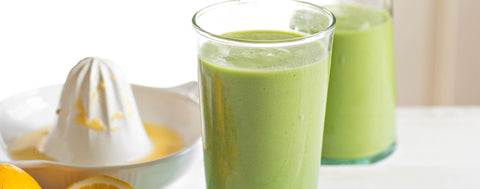While our luscious locks might look healthy they could be hiding a dark secret. Years of doing what we thought was helping our hair may have done more harm than good, leaving our hair thin, dull, brittle and damaged.
But that’s only part of the story. Synthetic chemicals used in hair products not only weaken hair but can also impact our health and precious ecosystems. Add to that the environmental waste of petrochemical plastics prevalent in hair packaging that end up in landfills and oceans, and it might be time to put a spotlight on our hair care practices and make a change.
So that our decisions align with our values, we’ve created this simple guide to help everyone’s choices contribute to our health, wellbeing and a thriving planet. Plus below, we introduce you to an innovative Kiwi brand that is making New Zealanders’ choices simple. But first, let’s get to the root of hair.
1. What is hair anyway?
Our hair is our quiet protector, providing a barrier against UV rays, and keeping our body warm when it’s chilly, and sweating to keep it cool when it’s hot. Hair is an extremely strong biological material composed of tough fibrous protein, most particularly alpha-keratin - also found in nails - made from repeating amino acids.
Hair grows from within the deep, dermal layer of the skin. It is housed within its own hair follicle within a hair bulb that supplies essential nutrients at the hair root through tiny blood vessels. The hair follicle has its own sebaceous gland and hair erector muscle. The sebaceous gland produces the oily, waxy substance called sebum, which lubricates hair protecting it from becoming dry, brittle and weak.
Our hair-story
The hair shaft is the part we can see and comprises three layers, the medullar, the cortex and the cuticle.
- The medullar is the innermost fragile, soft layer, rather like the marrow in our bones.
- The cortex is the thickest layer and contains the pigment melanin that colours our hair.
- The cuticle layer comprises dead cells compacted in scale formations on the outer surface that protect and strengthen hair.
Our hair grows in three phases. The growth anagen phase that lasts several years, the transitional catagen phase where the hair follicle shrinks and growing slows, and the resting telogen phase, where the hair separates from the hair follicle and is replaced by new hair.
2. Nasty chemicals that are a no-no for hair.
For decades we’ve been giving our hair a rough deal. Synthetic chemicals contained in many hair products have stripped our hair of its natural, protective oils - damaging the cuticle hair layer. This has resulted in anything from dull, heavy, thin, dry, frizzy or oily hair, to chronic scalp irritation, eczema, itchiness, redness and dermatitis. Yikes!
Many popular shampoo brands use lathering agents that stabilise the interaction between oil and water. These agents create the foam we have come to expect while shampooing our hair, but it comes at a price.
Two of the most popularly used are detergent surfactants sodium lauryl sulfate (SLS) and sodium laureth sulfate (SLES), which is often processed with the known carcinogen 1,4-dioxane. Both SLS and SLES have been associated with skin and eye irritation, endocrine disruption, neurotoxicity, organ toxicity and cancer.
Other popular shampoo and conditioner ingredients are:
- Propylene glycol, used in antifreeze, and associated with brain, liver and kidney issues.
- Parabens methylparaben and propylparaben used to prevent bacteria, as a preservative, and to stimulate hair growth. Parabens are considered to mimic estrogenic activity and have been linked to hormone imbalance, compromised reproductive systems, immunotoxicity and cancers including breast cancer.
- Polyethylene glycols (PEGs) are used as softeners, thickeners and moisture-carriers. They are often contaminated with known human carcinogens 1,4-dioxane and ethylene oxide, also connected to human developmental issues.
- Coal tar and crude oil derivatives aminophenol, diaminobenzene and phenylenediamine, used in dandruff and psoriasis shampoos and hair dyes, are linked to headache, dizziness, vision problems and respiratory issues.
- Known human carcinogens imidazolidinyl urea and DMDM hydantoin that have been connected in studies with foetal development harm and cancers.
- Silicone coats hair making it look slick, shiny, smooth and falsely “feel” lubricated. In days following use, hair will be limp and dull, and the plastic polymer coating will prevent moisture and nutrients from naturally conditioning the hair shaft resulting in weak, damaged, brittle and the dreaded frizzy hair.
- Synthetic fragrances are 95% petroleum-derived and can include any number of up to 500, patent-protected, non-disclosed chemicals. As examples, fragrances can include known carcinogens benzene derivatives, aldehydes and toluene linked to nausea, headaches, respiratory issues, memory loss, skin irritation, severe allergic reactions, infertility, birth deformity, organ toxicity, central nervous system disorders, and endocrine disruption.
3. Environmental impact
Synthetic chemicals contained in personal care products also wash down our drains into our wastewater systems. There they undergo water treatment, but some contaminants still enter our groundwater systems making their way into rivers, lakes and oceans, impacting marine life, bird life and our ecosystems. While there is no conclusive evidence of specific environmental harm, the Environmental Protection Agency (EPA) has listed synthetic chemicals like those listed above as being “of concern” given that they may bioaccumulate when thousands of households use them everyday.
Plastic waste is another scar on the haircare industry landscape. Most are made from unrenewable sources including crude oil and coal, and many, such as BPAs, have been linked to harming human health, including fertility issues, childhood developmental issues, immune disease and many cancers.
In New Zealand, despite nationwide recycling programmes, less than one-third of Kiwis recycle, which means more than 250,000 tonnes of plastic waste enters our landfills every year. This figure doesn’t include the tonnes of plastic waste that litter our land, beaches and water. Shampoo, conditioner and hair styling products are high contributors to household plastic waste and yet are one of the easiest waste products to remove, which we tell you about next.
4. The Kiwi brand raising the bar
New Zealand company Good Cube is changing Kiwi bathroom habits and making our country and planet better for it. Good Cube has created a range of three performance-based solid multitasking shampoo and conditioner bars that use the latest innovation to ensure value for money while gently and effectively cleansing and naturally moisturising hair.
The range is free from synthetic chemicals and fragrance, and only contains potent natural, plant-based ingredients hand-selected to hydrate, rejuvenate and protect hair without stripping away natural oils.
Hero ingredients include New Zealand native botanicals:
- Harakeke oil for naturally occurring lustrous shine, moisture loss prevention, and is a powerful antioxidant with anti-inflammatory and anti-irritation properties.
- Kawakawa leaf extract stimulates hair and scalp to cleanse and refresh while protecting against environmental stressors, UV rays and pollution.
- Kūmarahou extract, Aotearoa’s natural antimicrobial “soap”, provides a gentle lather to cleanse while not stripping hair or skin of natural moisture.
- Horopito extract, a potent antioxidant and conditioning agent, has been shown to prevent free radical damage from pollution and UV rays.
All Good Cube bars are carefully made in hand-batches to ensure highest quality and consistency. Compression technology compacts every solid bar ensuring each one is packed only with potent, natural ingredients that cleanse and nourish hair, and nothing else. This means that each bar, gram for gram, can last up to 16 times longer than its liquid equivalent shampoo and conditioner, making it not just the eco choice, but the pocket friendly one.
Good Cube is also the waste-free alternative, packaged within a home compostable cardboard box. By using just one bar, you prevent up to five shampoo and conditioner plastic bottles from entering recycling - which requires energy and costs money - or landfill. Most Good Cube bars, on average, last for 100 to 150 washes.
In addition, while most shampoos and soaps are alkaline making them cheaper to produce, sitting at around pH8 - pH12, Good Cube bars are slightly acidic, with pH of under 6.5. This advantageously mimics the natural acidity of our hair and skin to ensure optimum hydration and avoid brittle hair and irritated skin.
Good Cube have partnered with Sustainable Coastlines so that for every 120g bar sold, they give 33c to this vital organisation. Sustainable Coastlines is a registered charity that brings people together to roll up their sleeves and clean up New Zealand’s coastlines. It also educates people about plastic pollution and engages in riverbank and wetland replanting projects nationwide.
Let your hair story make history for the right reasons!




